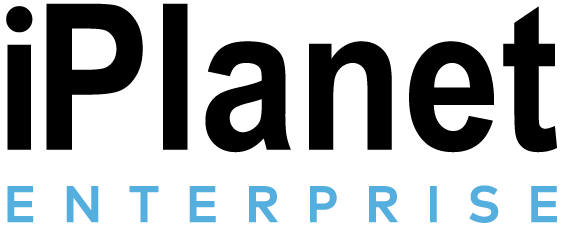For Chief Information Officers (CIOs) leading digital transformation in India’s manufacturing sector, the decision to migrate from Windows to Mac is both a strategic opportunity and a complex challenge. While Macs are widely recognized for their productivity, security, and reliability benefits, realizing these advantages at scale requires careful planning, cross-functional alignment, and expert execution.
This guide outlines a step-by-step roadmap for CIOs to evaluate, plan, and execute a successful Windows-to-Mac migration—with iPlanet as your enterprise partner.
Why Consider Windows-to-Mac Migration?
Modern manufacturing enterprises are under pressure to innovate, protect sensitive data, and drive efficiency. Macs deliver tangible advantages across three critical dimensions:
Productivity & Collaboration
With intuitive interfaces, fast performance, and seamless integration with leading collaboration tools, Macs help employees work smarter and faster.
Security & Compliance
Built-in encryption, secure boot, and advanced access controls ensure robust protection of proprietary data, supporting compliance and business continuity.
Long-Term Cost Efficiency
Longer device lifecycles, lower support requirements, and reduced downtime contribute to a lower total cost of ownership (TCO) over time.
For CIOs, these factors align directly with strategic KPIs: efficiency, security posture, and IT cost optimization.
Step 1: Aligning Stakeholders and Building Consensus
Migration success depends as much on people as it does on technology. CIOs must secure buy-in across all levels:
Executive Leadership: Present a business case with projected ROI, reduced TCO, and alignment with strategic objectives.
IT & Security Teams: Address concerns around integration, support, and risk management.
Department Heads & End Users: Engage early influencers to uncover workflow needs and build internal champions.
iPlanet supports this phase with executive workshops and alignment sessions, ensuring clarity of vision, transparent communication, and unified goals.
Step 2: Assessing Application Compatibility & Workflow Integration
One of the biggest concerns for CIOs is ensuring mission-critical applications work seamlessly during and after migration.
Key actions include:
Audit Applications: Review all business-critical apps for Mac compatibility.
Test Alternatives: Explore cross-platform or Mac-native solutions where gaps exist.
Plan Phased Rollouts: Run pilot programs or dual-platform environments to minimize risk.
With iPlanet’s compatibility mapping and workflow assessments, enterprises can protect continuity while modernizing strategically.
Step 3: Security, Compliance, and Risk Management
Manufacturing CIOs manage vast amounts of sensitive IP, supply chain data, and customer information. During migration, security and compliance cannot be compromised.
Best practices include:
Endpoint Management: Deploy centralized tools for monitoring, patching, and enforcing policies.
Encryption Protocols: Secure data at rest and in transit with Apple’s built-in protections.
Compliance Alignment: Map deployments to global standards like ISO 27001, GDPR, and India’s DPDP Act.
iPlanet ensures ongoing compliance through robust governance frameworks, monitoring, and post-deployment audits.
Step 4: Managing Change and Empowering Users
User resistance is often the biggest barrier. Employees familiar with Windows may fear productivity loss or compatibility issues. CIOs must approach this as a change management exercise:
Tailored Training: Role-based training for engineers, operators, and administrative staff.
Hands-On Support: Access to iPlanet’s Apple-certified trainers for real-world troubleshooting.
Clear Communication: Reinforce benefits like intuitive workflows, stronger security, and better collaboration.
This structured approach builds user confidence and accelerates adoption.
Step 5: Measuring ROI and Total Cost of Ownership
CIOs need to demonstrate value to leadership and boards. Metrics to track include:
Reduced IT Support Costs: Fewer helpdesk tickets and faster resolutions.
Productivity Gains: Higher adoption rates and faster workflows.
System Uptime: More reliable operations with less downtime.
iPlanet provides benchmarks, case studies, and industry references to help CIOs quantify results and showcase business impact.
Step 6: Choosing the Right Migration Partner
A migration of this scale demands the right partner. CIOs should prioritize providers with:
Comprehensive Services: From assessment to deployment to post-rollout support.
Cross-Industry Experience: Proven success in complex, legacy-heavy environments like manufacturing.
Apple-Certified Expertise: Teams trained to manage Macs at enterprise scale.
With iPlanet, enterprises gain a partner that combines technical depth with strategic vision, ensuring migrations are seamless, secure, and ROI-driven.
Conclusion: Take the First Step Toward a Future-Ready Enterprise
Migrating from Windows to Mac is more than a device decision—it’s a strategic transformation that unlocks productivity, strengthens security, and reduces costs. For CIOs in India’s manufacturing sector, the opportunity is clear: with the right planning, stakeholder engagement, and expert support, your IT environment can become a driver of innovation and operational excellence.
Contact iPlanet today to plan your Windows-to-Mac strategy. Our enterprise experts will guide you through every stage—assessment, migration, training, and ongoing support—ensuring your transformation is seamless, secure, and future-ready.



